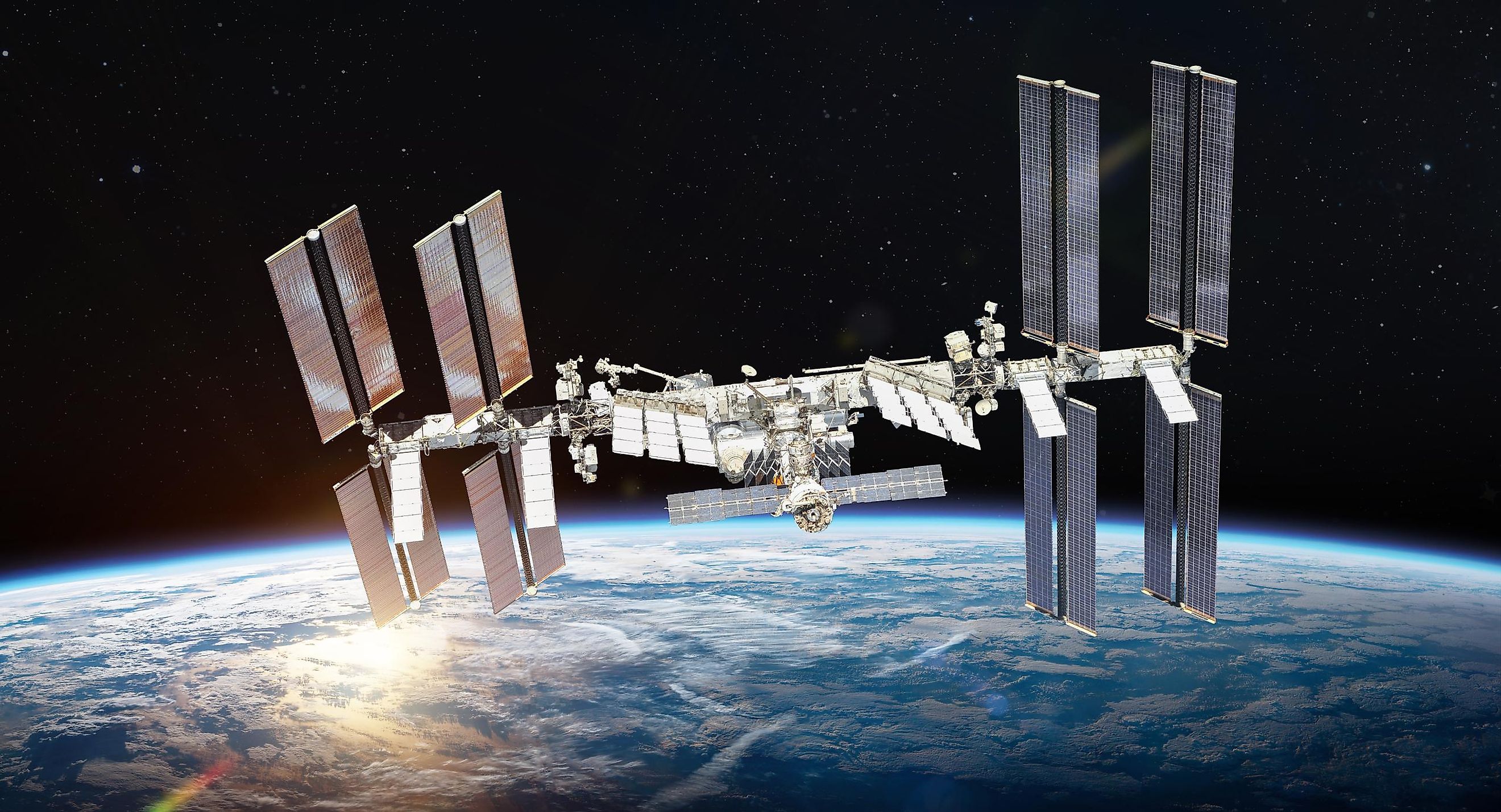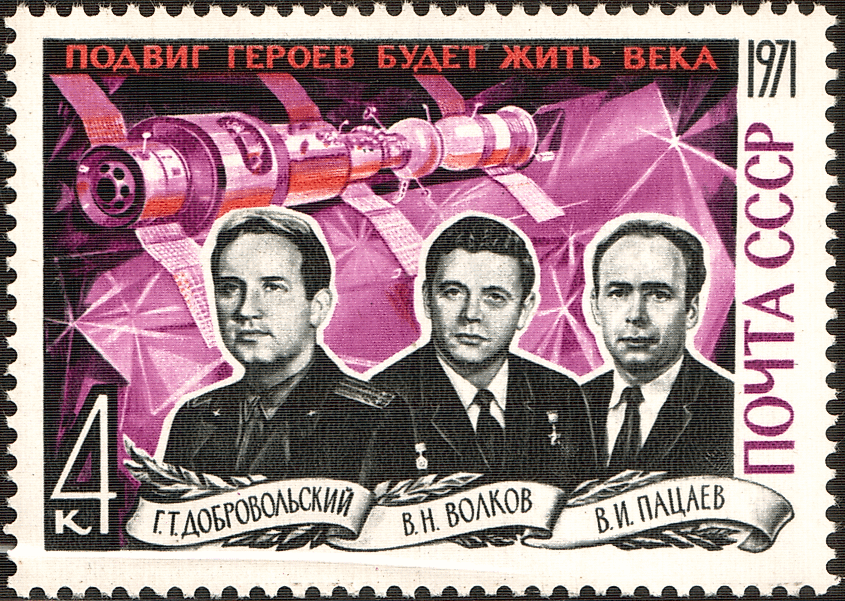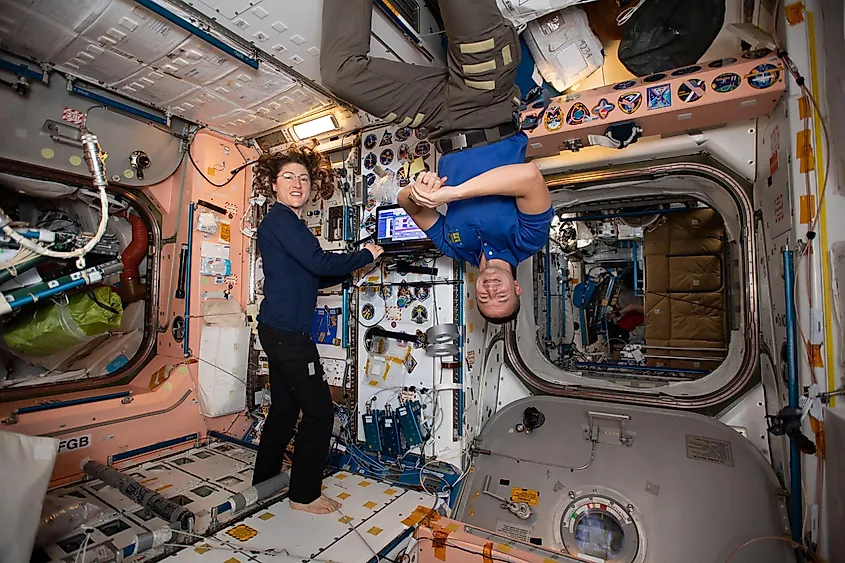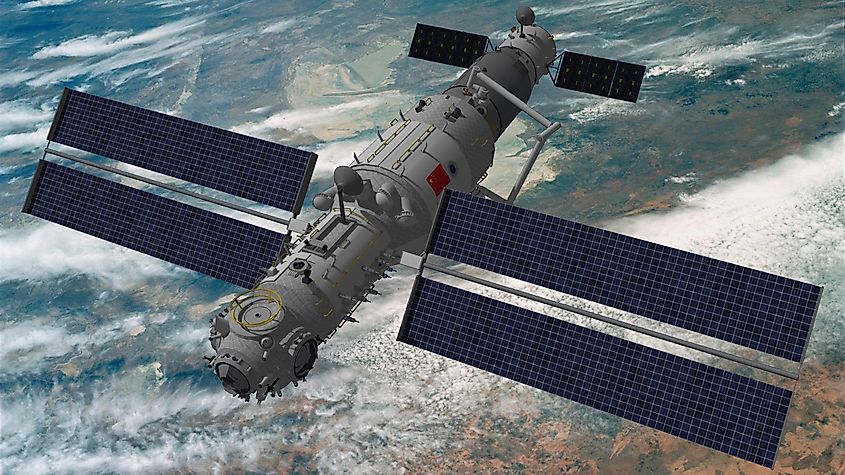
How Many Space Stations Are There In Space?
Large space stations in orbit around the Earth have allowed humanity to have a permanent presence in space. After the Apollo program ended, countries shifted their focus from deep space travel to a more localized position. Space stations are meant to be a stepping stone to space travel. Space stations orbit the Earth in low Earth orbit and are generally used to run experiments in space, such as how the human body behaves and reacts in zero gravity for extended periods. Many of the experiments performed on space stations have been specifically designed to determine the effects of long-term space travel. The most famous space station is the International Space Station (ISS), which happens to be one of two of humanity's space stations in orbit. The second station is China's Tiangong Space Station (TSS) which launched in 2021 and several modules were launched to attach to it, since then. Previously, 13 stations besides the TSS and ISS were temporarily in orbit, but were decommissioned — many were from the now-dissolved Soviet Union and two were precursors to China's current TSS. However, these two current stations will not be the last, because there is both room and purpose for more.
History Of Space Stations

The first space station developed was built by the Soviet Union in 1971. Called Salyut 1, it only saw two human missions. Soyuz 10 and Soyuz 11 were the only human missions to Salyut 1. Soyuz 10 failed to dock with the station, and the mission was quickly aborted. Soyuz 11 successfully docked with the station, and astronauts performed experiments aboard Salyut 1 for 23 days. Unfortunately, upon the mission's end, a valve failed to close correctly on Soyuz 11, and the entire crew lost their lives due to the loss of air. The Soviet Union launched three more space stations from 1971 to 1973, yet none were ever crewed. In 1973, the United States launched its first space station, Skylab, into low Earth orbit. Skylab would be the prelude to what would one day become the ISS. NASA conducted three separate crewed missions that spent about 24 weeks aboard Skylab from May 1973 to February 1974. Since NASA had not yet developed the space shuttle, there was no way for astronauts to refuel the space station. In 1979, Skylab fell towards the Earth under a decaying orbit and broke apart upon re-entry.
After Skylab, the United States would not launch another space station until construction of the ISS began. For the remainder of the 20th century, the Soviet Union continued its Salyut program with the launch of several more space stations. Perhaps the most famous space station launched by the Soviet Union was Mir. Mir was launched by the Soviet Union in 1986 and would remain in operation until 2001 (after the fall of the Soviet Union, it was operated by the Russian Federation from 1991 to 2001). While Mir was in orbit, it was the largest artificial satellite. Mir conducted hundreds of experiments on the long-term effects of space travel and determined that humanity could maintain a permanent habitat in Earth's orbit.
The International Space Station

For most people, the only space station they are likely familiar with is the International Space Station (ISS). This is not surprising since the ISS has been in orbit for over 23 years and has served as humanity's primary habitat in space for decades. Construction of the ISS began in 1998. The ISS is a joint project from multiple countries, including the United States, Russia, Japan, European Union, and Canada. Furthermore, it has been continuously occupied since 2000, and as of 2023 there are roughly 11 people on board. Although the United States and Russia provide most of the funding and technology, every member state offers different forms of technology that help make the ISS one of the greatest examples of international cooperation. After Russia's Mir space station was decommissioned, the ISS became the largest artificial object in Earth's orbit, and it is still expanding. Scientists continue to develop and add new modules to the space station, the latest of which was attached in 2021. The ISS has had its lifetime extended multiple times, and it has currently received enough funding to continue operating until 2030. Since 2000, there has always been someone aboard the ISS, making it humanity's longest continued presence in space. As of 2022, the ISS has been visited by 251 astronauts from 20 different countries.
China's Space Stations

China is the only major space-faring country that does not partake in missions to the ISS. Instead, China develops and launches space stations of its own. China's first space station was Tiangong-1, launched on September 29, 2011. Tiangong-1 remained in operation for two years. After the station was decommissioned, it remained in orbit until 2018, when it burned upon re-entry into Earth's atmosphere. Tiangong-1's primary objective was to test China's capabilities in space and lead to the development of future space stations.
On September 15, 2016, China launched its second space station, Tiangong-2. The primary objective of China's second space station was not to build a permanent habitat in space but rather, to test the technology required for eventually building a permanent habitat in space. After only three years, Tiangong-2 was decommissioned and burned upon re-entry in 2019.
Then, in 2021, China's current Tiangong Space Station (TSS) was launched. As of 2023, TSS is fully operational and crewed and marks China's ongoing establishment in orbit. It began its continuous habitation with the Shenzhou 14 crew in June 2022. TSS's construction reached a pivotal phase in 2022 with the addition of two laboratory modules: Wentian, launched on July 24, 2022, and Mengtian, launched on October 31, 2022. These modules significantly expanded TSS's research capabilities, enabling a wider range of scientific experiments. In 2023, a record was set with 17 people in orbit simultaneously, including six aboard the TSS.
The beauty of the space race, which now invites all countries to participate, is that it is a healthy competition with potential to benefit all of humankind. Further, besides the technologies and revelations the investment has spawned, countries typically assist each other. Different nations board and assist the ISS, and countries that are typically on fragile political terms work together, which is a promising step toward a healthier relationship in the future.











